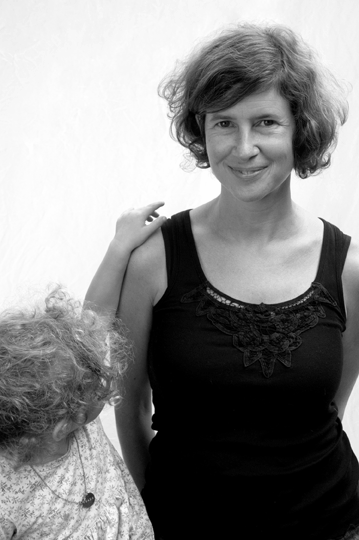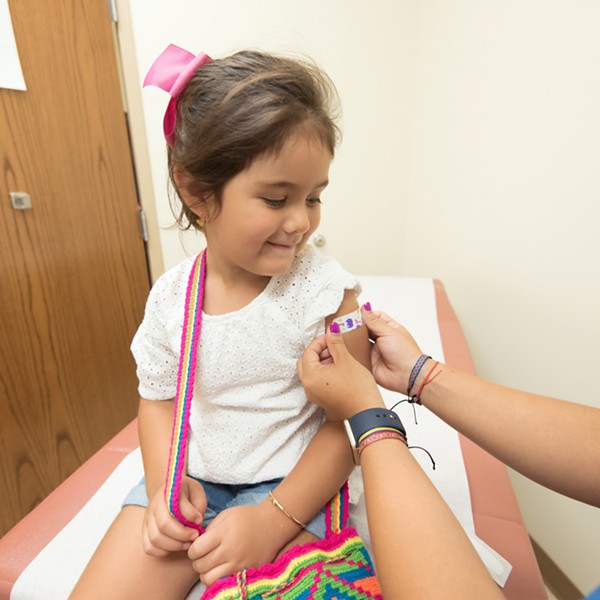In last month’s column, I indulged my obsession with feeding my toddler by interviewing three experts on kids and/or food and/or mindfulness. I promised that I would consider what they said during the following month, and conduct a little anecdotal research, then report back. As a recap, these are my wonderfully willing experts:
Dr. Harvey Karp: Dr. Karp is the best-selling author of The Happiest Baby on the Block and The Happiest Toddler on the Block. He is a professor of pediatrics of UCLA School of Medicine and travels extensively, talking (lovingly) about kids.
Nina Planck: Nina wrote the critically acclaimed Real Food: What to Eat and Why a couple years ago. Her most recent book is Real Food for Mother and Baby. Both are gems.
Konrad Ryushin Marchaj Osho (Ryushin Osho): Before moving into Zen Mountain Monastery in 1991 to become a monastic/priest/teacher, Ryushin Osho was a pediatrician and a psychiatrist.
I asked them all the same three questions, based on my own concerns, as well as what I hear from other parents. This is what I gleaned from their answers and how it all played out at our table.
What is the best way to raise a mindful eater—someone who appreciates food but is not obsessed with it?
Dr. Karp: “Each child is different, but many go through seriously picky eating stages. And others just aren’t that into food.”
Nina Planck: “Don’t be obsessive about wanting your kids to be mindful.”
Ryushin Osho: “Remember that food isn’t just food. It’s love, it’s attention and it’s play.”
I got the message pretty loud and clear on this one: Re-lax! Why I ever thought that being a robot—no-dessert-if-you-don’t-eat-your-meatball-just-try-it-okay-lick-it-good-job-you-did-it…repeat—would encourage a shred of mindfulness for any of us is beyond me. Poor Azalea, innocently enjoying a bit of space in that clear mind of hers and I am filling it with the kind of control-seeking anxiety I have been trying to let go of for years on my meditation cushion. What was I thinking?
So now I am more willing to let Azalea find her way through her meal, and if she wants to be excused before she has eaten what we consider a satisfactory meal (which varies depending on the day/menu, etc.), I will simply remind her (once, maybe twice) that the food on her plate is all that is being offered, so if she is hungry later, she won’t be having applesauce, dessert, or anything else. Unless, of course, we decide to throw the whole thing out the window and just bring on the ice cream. I don’t have any hard data on whether or not her eating has “improved,” but our time together sure has!
Indeed, it has been intriguing to consider the possibility that preparing food is not the only way to offer love at mealtimes. There’s also this thing called…um…let me look at my notes…I think it’s fun? I had heard of this before, but I was pretty skeptical. But then one night Azalea insisted she was finished receiving my love, I mean eating her salmon, and I recalled Ryushin Osho’s Polish grandfather doing the whole whale routine (see last month’s column). I felt ridiculous and not at all optimistic, but I gave it a shot: Look, it’s a whale going into the cave—fish on fork, aimed at her mouth, as if she were a…baby…or small child! Immediately, she opened up and ate. Okay. That totally worked. Just this morning, with her cream of rice cereal, she said: “Mommy! Pretend it’s a bunny hopping in!” Gulp.
In order to get a picky eater to try new food, is it okay to bribe kids—for example, “If you eat your broccoli, you can have ice cream”?
Dr.. Karp: “Absolutely.”
Nina Planck: “I don’t think it’s fatal, but it seems sort of limited as a tactic.”
Ryushin Osho: “I think I would be cautious, but at the same time, what the hell do I know?”
Thanks, Dr. K.! Just last night we told Azalea that she could have dessert (apple juice; should I feel guilty about this?) after she tried her roasted red pepper. So she started with the lick, then we told her she had to take one bite and swallow it (recently she has developed the spit-out avoidance technique). So she did. “It’s good,” she announced. Then we all let it go. So it may take 50 more appearances for the red pepper to become part of her repertoire, but at least they’ve been introduced—Azzie and the pepper—and they’re even kind of friendly.
Should we serve picky eaters special foods at mealtimes?
Dr. Karp: “It’s not wrong to indulge your children as long as when you have to set a limit, they know they have to respect your limit.”
Nina Planck: “We don’t have a separate shopping list for [real] kids’ foods. In deciding what’s for supper, I treat my son’s considerations with equal weight to mine and my husband’s.
Ryushin Osho: “I never experienced that, so it would be difficult for me to imagine what that would feel like.”
This was the most thrilling part of my interviews. Ryushin Osho’s family never offered special meals, and he didn’t starve, so if I don’t want to, I don’t have to!
Nina Planck says that “kids’” food—cheddar bunnies and the like—are unnecessary (her genteel way of saying gross), but that doesn’t mean we don’t try to please our kids’ palates. We can all eat real, tasty food together.
And Dr. Karp spun the whole question in a very helpful direction. He basically gave me permission to be as indulgent or persnickety as I want when it comes to the dinner table, because it’s not the rules that matter as much as our ability to enforce those rules skillfully. When our family sits down to eat, of course, nutrition is vital, but so are our relationships that form around the food.
So what have I learned? I’d say that raising a mindful eater doesn’t mean that Azalea won’t always be picky or have strong preferences or even be that into food. She may never swoon over bright green olive oil the way her mother does. But by creating a loving, playful, nourishing environment, maybe she can be relaxed enough to truly taste it.

















